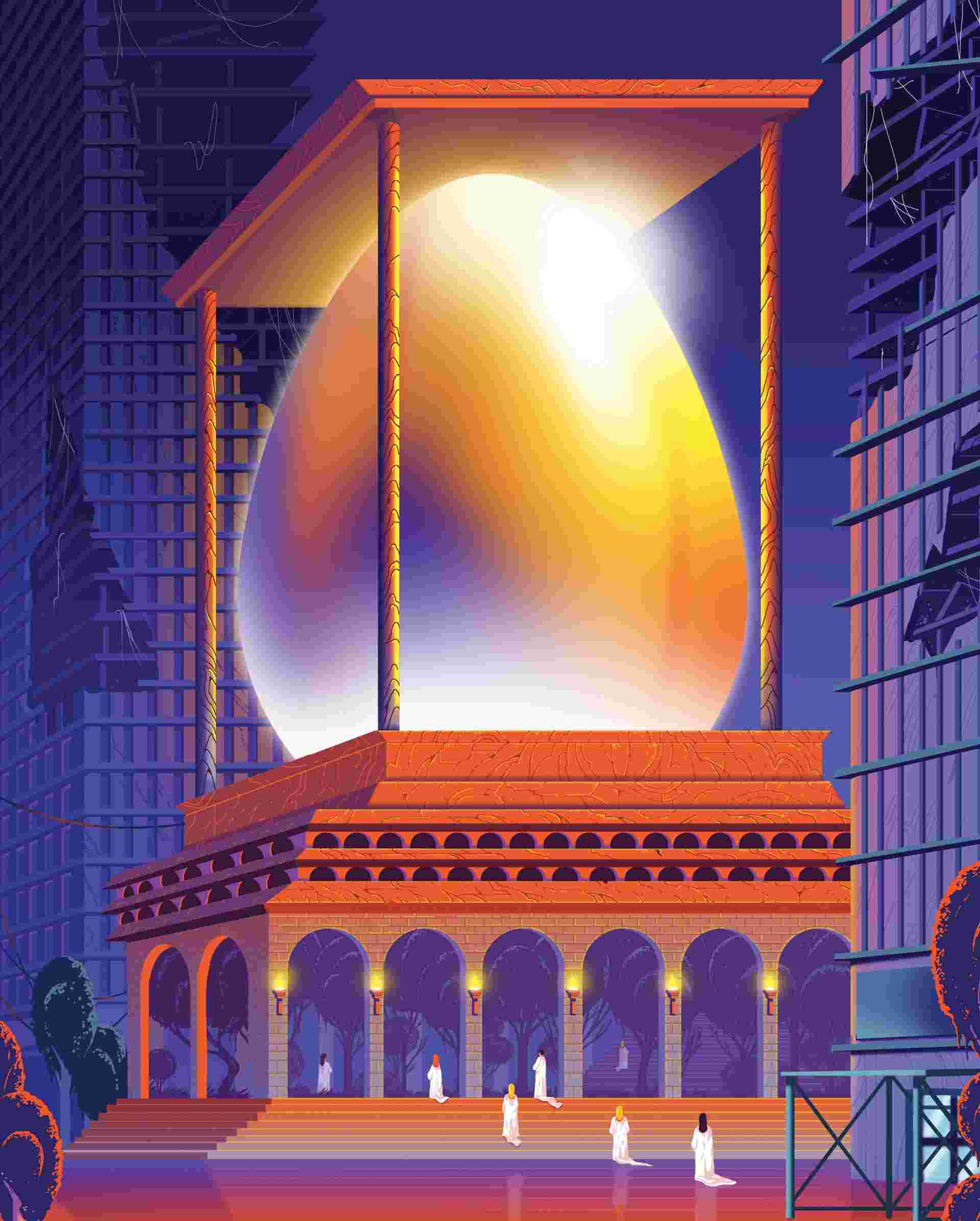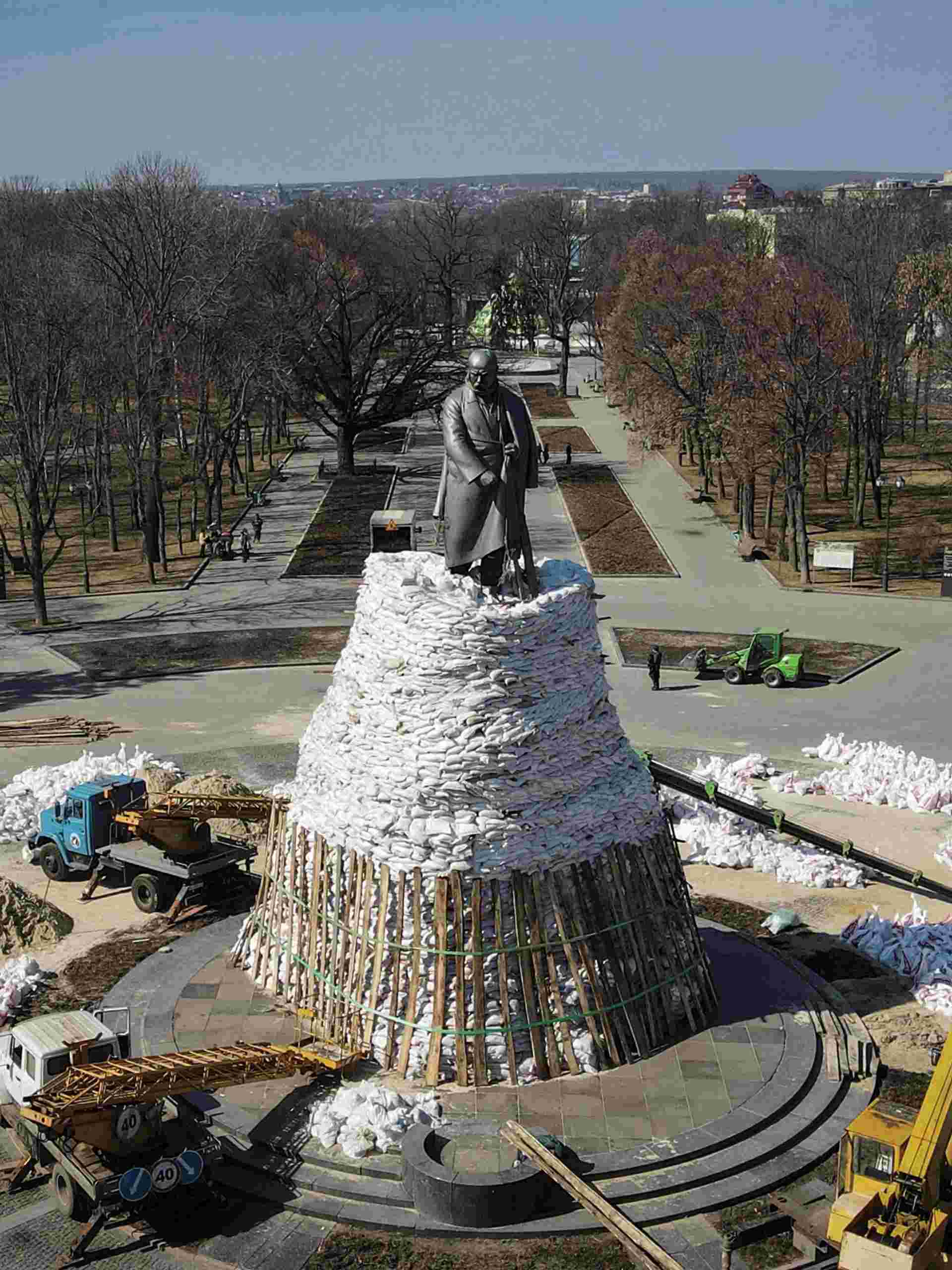
Glenn Harvey
Fill In The Blank Glenn Harvey’s orb-like urban infill
By Christina Kudryk and Oleh Lesiuk
Photo courtesy of Aris Messinis/AFP via Getty Images

Christina Kudryk: My parents came to Canada after the First World War but I was born in Ukraine. I’m Ukrainian-Canadian and a visual artist—I paint. I’ve had a number of solo shows, and as a matter of fact, I had my retrospective exhibition at the Andrey Sheptytsky National Museum in Lviv, which is in the western part of Ukraine, which has now been bombed.
Oleh Lesiuk: When the war started, everybody was shocked by the horrific situation—not only Ukrainians but the whole world. I talk to artists in Ukraine on a daily basis. Up until February 24, everybody was thinking Putin was bluffing. I’ve seen how much their minds have changed with the everyday news, sirens, bombing, missiles and many of them staying in bunkers. We know many artists who have traded their brushes for guns and given their valuable lives for Ukraine. It’s very difficult now for artists. I can say from my own experience that it’s difficult to focus on art.
After a few days of shock, I came up with the idea to hold the Artists Stand With Ukraine fundraising exhibition, with all proceeds going to the Ukrainian [armed] forces. We organized this exhibition at the KUMF Gallery in a very short time, but the number of artists who donated pieces and people who purchased artwork was more than we expected.
C.K.: Art is an expression of a society at a given time. It is also a personal expression of the artist. Artists have expressed themselves differently in reaction to conflict. What comes to mind, for example, is Picasso’s Guernica. It shows the horror and the despicable actions of war. And the way he does this is through angular lines, distorted forms and the use of grey—no colour. Käthe Kollwitz, for example, was a German artist whose son died in the First World War. She spent over 10 years doing a monument to the dead to show the hopelessness of war.
I painted a couple of pieces when we had the Maidan, the Revolution of Dignity, which started out very peacefully. There was a lot of art happening—installation pieces, performance art—and there was a pianist who painted his piano blue and yellow and played in front of the soldiers. Eventually it turned violent. People were dying; they were shooting; there were fires. I sat in front of the TV and cried, I really cried and then I painted.
“We will rebuild what we have lost, but some things will be lost forever.”
O.L.: I’ve created several sculptures in the past that are relevant to the war in Ukraine now. One is called Confrontation, where I showed, in an abstract way, confrontation between two worlds, between two nations, between good and evil. The war did not just start a month ago; in some ways the war has been ongoing for more than 300 years, so this is what we’re responding to.
C.K.: Yes, you can’t help but react to what is happening because artists express what is around them and how they feel. And we feel very strongly about what is happening. What we’re seeing in front of our eyes is unbelievable. It’s so difficult to show this evil and this horror, but I’m sure many artists will be able to do that. Some artists will do this symbolically.
I want to paint something, but I think I’m going to show hope. I’m thinking of how Ukraine will be once we have won, how we will overcome this. And not only the hope but also the conviction that we will be a free and strong country again.
O.L.: This war is the culmination of conflict between Russia and Ukraine and us always defending our peace and showing to the world that our history and culture are very old and we deserve to be on the map.
C.K.: In Ukraine now, so much has been destroyed. Museums have been destroyed; the art will be gone forever. How this will affect art collections, I don’t know. I hope there will be a lot left. The museum in Lviv has the greatest collection of Ukrainian items in the world, and they’ve packed up all their art. It’s a gorgeous building, it’s a gorgeous collection, but everything is bare and packed away, hidden in places like basements and antiquated Second World War bomb shelters. I’m hoping a lot of it will survive.
O.L.: Yes, you can see what is happening with trying to protect the treasures and heritage of Ukrainian culture in western Ukraine, in places that haven’t been hit yet. Volunteers and artists in many cities are packing and crating sculptures that can’t be removed. A special monument in Kharkiv, you can see in the news, is packed with sandbags. It’s very sad to watch this. Before I left Ukraine, I had monuments installed there, and they are still standing in public places, so I’m worried as an artist. I’m looking at all the others already damaged, already destroyed, and I feel very sad for the artists and for those people who have to watch these monuments—these treasures—be destroyed.
C.K.: It’s not just paintings and sculptures; it’s also architecture. Some of the cities are rubble; all the architecture is gone. Hopefully there are plans and photographs that can be used to restore historical buildings. We will rebuild what we have lost, but some things will be lost forever.
O.L.: The houses, the buildings and the museums will be rebuilt, but the art that is already gone is a loss not only for Ukraine but the whole world community.
For more information on the Ukrainian Association of Visual Artists of Canada’s efforts to assist Ukraine, please visit kumfgallery.com.